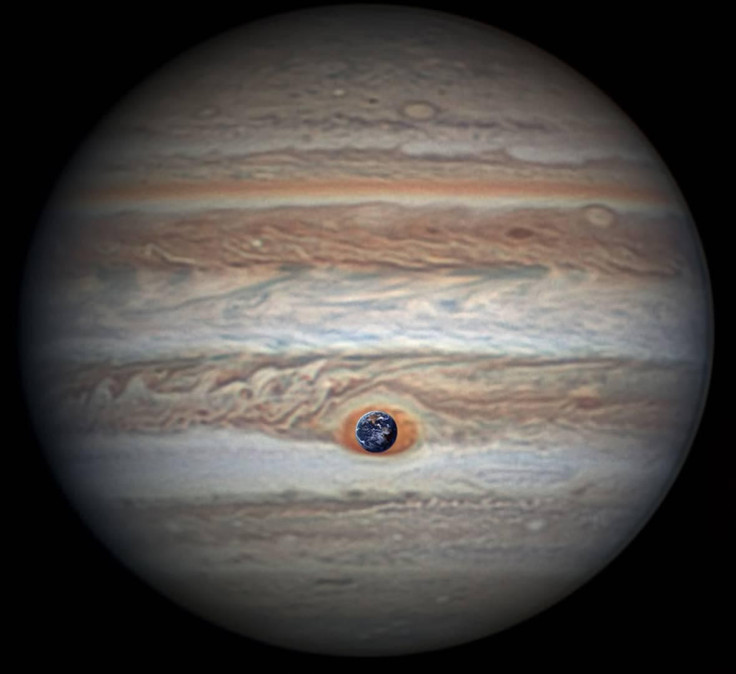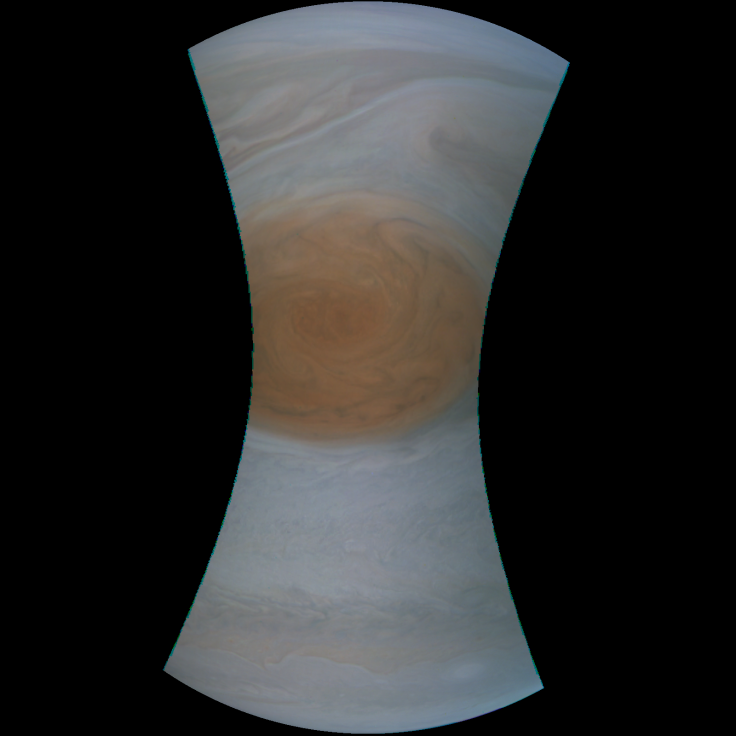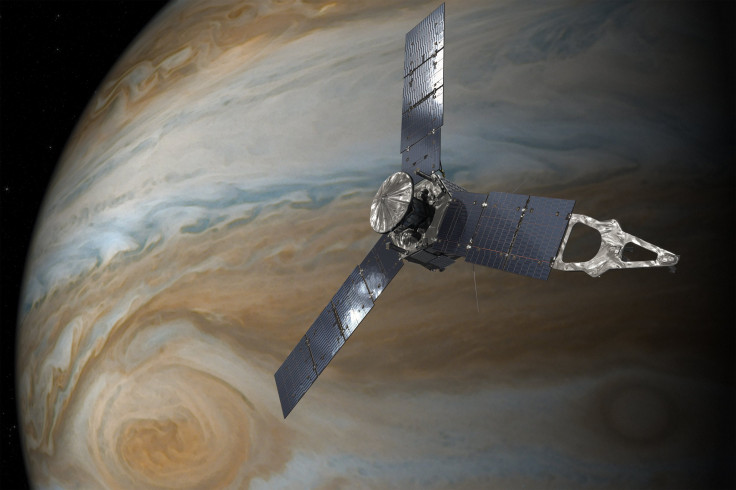Jupiter’s Great Red Spot: Photos From NASA Spacecraft Juno Could Help Find Aliens

How could a massive storm on one planet help us find aliens on another? Jupiter, with its Great Red Spot, has properties that are similar to a common kind of exoplanet, but scientists are still struggling to characterize the atmospheres and conditions on such worlds as they search for ones that are habitable.
NASA’s Juno spacecraft sent back the closest photos ever taken of Jupiter’s swirling red eye yesterday, after completing a flyover of the Great Red Spot earlier this week. The images have not yet been processed, but they are giving scientists a better view of the gas giant’s record-breaking storm, revealing details that could help us better understand weather and atmospheric conditions both at home on Earth and on planets in other solar systems. A raging storm itself might be interesting, but it’s that background it provides for understanding other worlds that could be where Juno’s photos make the most impact.
Read: Moon Volcanoes Make Jupiter’s Auroras Special
Imagine a storm that is so vast it could surround the entire Earth. As enormous as that sounds, it’s still not as big as the Great Red Spot.
The Great Red Spot “is the largest and most powerful storm in the solar system, as far as we know, and it’s also the longest lived storm in the solar system,” Juan Lora, a planetary scientist at the University of California, Los Angeles, told International Business Times. It’s been going for at least a few hundred years and its winds blow between 200 and 300 mph. You could draw comparisons between the Great Red Spot and cyclones on Earth, but the one on Jupiter is “much larger, more intense and longer lived.”
How has it lasted so long? One thing that makes storms on Earth behave the way they do is the thin atmosphere and the friction caused by the surface.
“On Jupiter there is no surface,” Lora explained.

It won’t last forever. The storm is more than 10,000 miles wide right now, but that is a significant decrease in diameter from what it used to be — according to NASA, astronomers in the late 1800s estimated the storm to be about 25,500 miles wide.
Whether or not that Victorian Era number is accurate, more modern measurements have also shown the oval is becoming more circular. When the NASA spacecraft Voyager 1 and Voyager 2 went by Jupiter, they logged the Great Red Spot as being about 14,500 miles across. And it had lost almost 1,500 miles of that by 1995, when the Hubble Space Telescope took its own measurement. Just eight years ago, it was a little more than 11,000 miles wide.
The Great Red Spot is losing hundreds of miles of coverage every year. Still, its size and longevity is unmatched in our astronomical records.
That’s despite the fact that we don’t really know its size and longevity. In terms of its age, we only know when scientists first took notice of it. And when it comes to size, we don’t know how deep down into the ball of gas the storm reaches.
The answer to the latter mystery might explain how this storm has lasted so long. And depth is one of the details Juno might begin to uncover as it sweeps through that neighborhood of the outer solar system.
The spacecraft was roughly 5,600 miles above the clouds when it passed over the Great Red Spot a few days ago, the closest any probe has ever gotten.

Juno has been orbiting Jupiter for a year, after launching from Cape Canaveral in 2011 and making its way out. It has gotten as close as 2,100 miles above Jupiter’s cloud tops during its mission.
“During these flybys, Juno is probing beneath the obscuring cloud cover of Jupiter and studying its auroras to learn more about the planet’s origins, structure, atmosphere and magnetosphere,” NASA said. “Early science results from NASA’s Juno mission portray the largest planet in our solar system as a turbulent world, with an intriguingly complex interior structure, energetic polar aurora, and huge polar cyclones.”
That last bit is important — Jupiter has other storms swirling through its gas. But none compare to the Great Red Spot.
And some might even be consumed by it when they take a wrong turn. Some scientists speculate that the shrinkage is linked to these smaller storms: Either fewer small storms are feeding into the Great Red Spot, meaning it has less fuel powering it, or too many storms spinning slowly or in the opposite direction have collided with it, causing drag that drains it.
Read: This Alien Super-Jupiter Orbits a Cool Star
We might learn even more when Juno closely flies over the Great Red Spot again in September.
For now, experts are going to glean everything they can from this first batch of flyover photos. Lora said the storm is particularly helpful for understanding a class of exoplanets called “ hot Jupiters,” which are planets around the same size and believed to have similar compositions but that are orbiting close to their stars. Although there will be some differences, understanding atmospheric dynamics on our Jupiter will teach us more about those hot Jupiters.
And as our technology for finding exoplanets improves, we may find more Jupiter-sized planets farther away from their stars, perhaps as far as Jupiter is from the sun. When that happens, we might know enough about the Great Red Spot to better predict their atmospheric conditions.
“Jupiter is really the king planet of our solar system,” Lora said. “Jupiter is a great analog.”
© Copyright IBTimes 2025. All rights reserved.




















